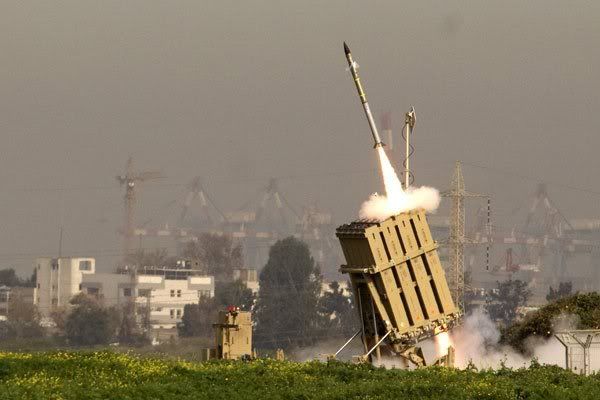Friday, 9 March
Israel strikes to stop a terrorist attack
Saturday, 10 MarchIsrael Air Force launched a strike on Palestinian targets in Gaza on Friday, killing the leader of the Popular Resistance Committees, the organization that captured former IDF soldier Gilad Shalit.
The IDF Spokesman said in a statement that that the attack targeted Zuhir al-Qaisi, the secretary-general of the Popular Resistance Committees, and his collaborator, Mahmoud Hanani.
Israeli and Palestinian officials reported that IDF forces fired two missiles at a vehicle in northern Gaza, immediately killing al-Qaisi and Hanani, who were inside.
Al-Qaisi, the IDF Spokesman said, was recently organizing a large, coordinated terror attack to be carried out on Israel's border with Gaza. Hanani was a resident of Nablus and one of the prisoners freed as part of the deal to release Gilad Shalit, and was expelled to the Gaza Strip.
Al-Qaisi was one of the masterminds of the deadly terror attack in August 2011, in which eight Israelis were killed on Highway 12, which runs along the Israel-Egypt border.
The Popular Resistance Committees responded Friday to the attack, and vowed to avenge al-Qaisi's death in a way that would "shake the Zionist enemy."
Hamas' spokesman in Gaza said in response to the attack that the Palestinian people have the right to defend themselves.
Following the IDF strike, two mortar shells and eight rockets were fired into Israel, and cities near the Gaza border were put on high alert. The residents have been asked to stay close to bomb shelters.
After the rocket fire, IDF forces proceeded to strike targets in Gaza, killing two more Palestinian militants, who were trying to fire rockets into Israel. Highway 12 was also closed to traffic on Friday evening.
We find out what the "shake the zionist enemy" means.
100+ rockets and a whole bunch of mortar rounds get fired at Israel on a single day.
To put this in numbers; 50 rockets was the count for the last month or 2-3 months in total (I'm not sure).
Link

An Israeli missile is launched from the Iron Dome missile system in the city of Ashdod in response to a rocket launch from the nearby Palestinian Gaza Strip on March 11, 2012.
The usual airstrikes in response came, sixteen militants killed on Saturday, and then the first civilian fatality on the Palestinian side on Sunday, a 12 year old boy.Another round of fighting broke out over the weekend between Israel and militants in the Gaza Strip. It was the usual thing, only more so: Until Sunday morning, only militants were reported killed on the Palestinian side. And on the Israeli side, no one was even badly hurt, except for a Thai farmworker who had the misfortune of toiling in a field outside the remarkable umbrella known as Iron Dome, the anti-missile batteries that are transforming how Israelis respond to the sound of air raid sirens.
Instead of the stark terror provoked by that rising, sickening wail, a kind of grateful curiosity has joined apprehension in the cities of southern Israel that lie within rocket range of Gaza. Iron Dome works something like miracles. Stationed outside, say, Be’er Sheva, 22 miles from Gaza, the system reads the arc of incoming missiles to determine which may threaten populated areas. Militants fired some 120 missiles since Friday. Iron Dome judged that about two-thirds of those would land far from populated areas, and simply left them alone. Of the 37 that it calculated posed a significant danger to people, the system launched interceptor rockets that, in 32 cases, met the incoming missile and exploded it in mid-air. That’s an 86 percent success rate.
Just another slow day in the middle east....
